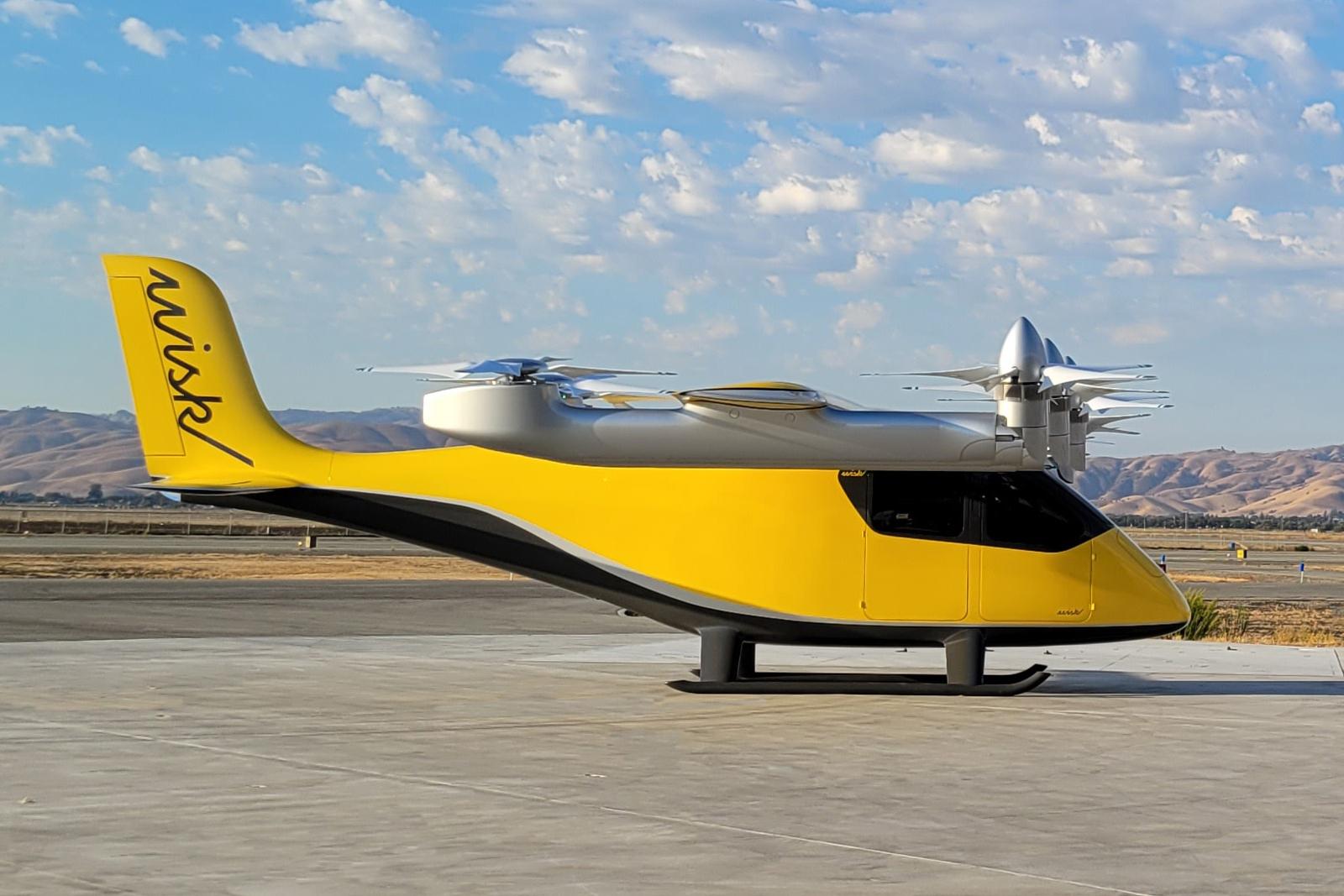
The Wisk autonomous sixth-generation eVTOL is designed to fly four passengers up to 90 mi. at 110-120 kt.
One day after President and CEO Dave Calhoun said autonomous technologies would be a key element of Boeing’s next clean-sheet airliner, the company revealed it has taken full control of self-flying air taxi developer Wisk.
The move underlines that Boeing’s 2019 decision to form the Wisk joint venture with Kitty Hawk was as much about the startup’s pioneering work on autonomous flight as its plans to enter the urban air mobility (UAM) market.
The full takeover of Wisk by Boeing also completes Kitty Hawk’s exit from the electric-vertical-takeoff-and-landing (eVTOL) market. Backed by Google co-founder Larry Page, the startup was founded in 2010 as Zee.Aero.
Kitty Hawk’s first eVTOL, the single-seat ultralight Flyer, was discontinued in 2020. Development of the two-seat Heaviside was halted last year and in September 2022, Kitty Hawk announced it was being wound down.
“We are now a wholly owned subsidiary of Boeing,” Wisk CEO Brian Yutko told reporters May 31 during a briefing at Boeing’s North Charleston, South Carolina, commercial aircraft plant. “Under our new ownership, we are going to be continuing our mission to bring this aircraft to market.” That aircraft is Wisk’s sixth-generation eVTOL air taxi, unveiled in October 2022 and planned to fly this year.
Yutko took over as Wisk CEO in February, having previously been Boeing’s chief engineer of sustainability and future mobility and before that senior vice president for programs at Boeing subsidiary Aurora Flight Sciences. Both Aurora and Boeing are working with Wisk on development of its sixth-gen eVTOL.
The commitment from and continued partnership with Boeing “allows us to combine what we think is some of the best small-company innovative thinking and technology approaches with one of the biggest and deepest aerospace companies in the world,” Yutko said.
A day earlier, Calhoun told reporters in North Charleston that Boeing has begun to define what its next commercial airliner should look like. The aircraft should be “something as close to autonomous as we can get,” he said. Autonomy research is underway within Boeing as well as at Aurora and Wisk.
“We think that this partnership will allow us to get to the next level and be able to open the market for an autonomous passenger-carrying electric aircraft for the first time,” Yutko said.
Unlike the majority of eVTOL startups, which intend to begin with piloted air taxis, Wisk its planning for autonomous operation from the outset. “Why autonomy? First of all, safety. We believe that we can push the safety frontier with automation,” he said. Other reasons are scalability and the ability to increase network flexibility and improve operating economics by boosting aircraft utilization.
“There’s a misnomer in the industry that this is about removing the pilot,” Yutko said. “The value of autonomy comes from unconstraining the aircraft from the cargo it has to carry.” He cited the example of underutilized regional cargo feeder aircraft.
“If you were able to unconstrain that system, you could move that aircraft around to increase the utilization and increase the flexibility of the network,” he said. “That’s what we see as the value in terms of scalability to improve the economics with autonomy.”
Wisk plans to certify the airframe and autonomy systems of its eVTOL to the same 10-9 safety level as large commercial aircraft. While saying it plans to be in service by 2030, the company is not giving a target date for FAA approval but is believed to be aiming internally for 2028.
This would coincide with the likely date when Boeing needs to make technology choices for a clean-sheet commercial aircraft to enter service in 2035. FAA certification of a fully autonomous aircraft, albeit one carrying four passengers, could increase the chances of autonomy making the technology cut.
The technology can scale up to larger aircraft, Yutko said. “If you look at the human factors that we’re doing for the ground stations, you could imagine easily how you take the insights we’re gaining from that and port them over into piloted aircraft to deliver safety enhancements.”





